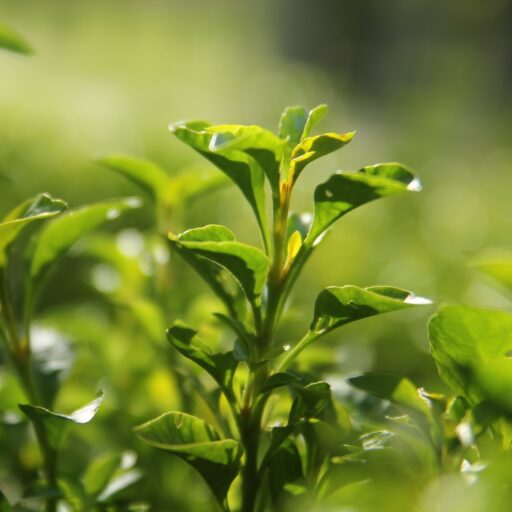Support our educational content for free when you purchase through links on our site. Learn more
[2023] Cold Hardy Tea Plants for Sale: A Comprehensive Guide
Are you a tea lover who dreams of growing your own tea at home? Look no further! In this comprehensive guide, we will explore the world of cold hardy tea plants for sale. Whether you’re a seasoned gardener or a beginner, we’ve got you covered. Get ready to embark on a tea-growing adventure that will bring joy and satisfaction to your daily cuppa!
Table of Contents
- Quick Answer
- Quick Tips and Facts
- Background
- Choosing the Right Cold Hardy Tea Plant
- Planting and Care
- FAQ
- Conclusion
- Recommended Links
- Reference Links
Quick Answer
Looking to buy cold hardy tea plants? We’ve got you covered! Check out our selection of cold hardy tea plants for sale. Whether you’re a fan of green, white, or black tea, our plants will provide you with an abundant supply of fresh tea leaves. Start your tea-growing journey today and enjoy the satisfaction of sipping tea made from your very own plants.
Shopping Links: Amazon | Walmart | Etsy
Quick Tips and Facts
- Cold hardy tea plants are varieties of the Camellia sinensis plant that can withstand colder temperatures.
- These plants are known for their smaller, narrower leaves, which are preferred for making green, white, and black teas.
- Cold hardy tea plants can be grown as attractive hedges or in containers, making them suitable for both large gardens and small spaces.
- They thrive in full to partial sun locations, protected from strong winds.
- Cold hardy tea plants require regular watering, preferably once a week, and prefer moist, well-draining, acidic soil.
- Pruning should be done yearly after the blooming period to remove dead, damaged, or crowded branches.
- The youngest leaves on the tea plant make the best tea and can be dried for storage.
- Cold hardy tea plants are long-living and can produce tea for over 100 years.
- These plants are backed by a 1-year warranty, ensuring their quality and health.
Background
Tea has been enjoyed for centuries, and its cultivation has spread across the globe. The Camellia sinensis plant is the source of all true teas, including green, white, black, and oolong teas. While Camellia sinensis is native to warmer regions, such as China and India, there are cold hardy varieties available that can withstand colder climates.
Cold hardy tea plants have become increasingly popular among tea enthusiasts who want to grow their own tea at home. These plants offer the satisfaction of nurturing and harvesting your own tea leaves, ensuring the freshest and most flavorful brews.
Choosing the Right Cold Hardy Tea Plant
When it comes to choosing the right cold hardy tea plant, there are a few factors to consider. Here are some key points to keep in mind:
-
Variety: There are different varieties of cold hardy tea plants available, each with its own unique characteristics. Some popular varieties include Camellia sinensis var. sinensis and Camellia sinensis var. assamica. Research the specific qualities of each variety to find the one that suits your taste preferences and growing conditions.
-
Hardiness Zone: Check the hardiness zone of the tea plant you’re interested in. Cold hardy tea plants are typically suitable for USDA hardiness zones 4-11 for patio cultivation and zones 7-9 for outdoor planting. Ensure that the plant you choose is suitable for your specific climate.
-
Size: Consider the size of the mature plant. Some varieties of cold hardy tea plants can grow quite large, while others are more compact. Choose a size that fits your available space and desired aesthetic.
-
Reviews and Recommendations: Read reviews from other tea growers who have purchased and grown the specific cold hardy tea plant you’re considering. Their experiences can provide valuable insights into the plant’s health, productivity, and overall satisfaction.
Planting and Care
Now that you’ve chosen the perfect cold hardy tea plant, it’s time to get your hands dirty and start planting! Follow these guidelines for successful planting and care:
-
Location: Choose a location that receives full to partial sun, as cold hardy tea plants thrive in these conditions. Ensure that the location is protected from strong winds, as they can damage the delicate leaves.
-
Soil: Cold hardy tea plants prefer moist, well-draining, and acidic soil. Test your soil’s pH level and make any necessary adjustments to create the ideal growing environment. Adding organic matter, such as compost or peat moss, can help improve soil drainage and acidity.
-
Watering: Cold hardy tea plants require regular watering to keep the soil consistently moist. Water deeply once a week, ensuring that the water reaches the plant’s root system. Avoid overwatering, as it can lead to root rot.
-
Pruning: Prune your cold hardy tea plant annually after the blooming period. Remove any dead, damaged, or crowded branches to promote healthy growth and airflow. Pruning also helps maintain the desired shape and size of the plant.
-
Harvesting: The youngest leaves on the tea plant make the best tea. Harvest the leaves when they are young and tender, usually in the spring or early summer. Gently pluck the leaves, leaving the bud intact for future growth.
FAQ
How cold can tea plants tolerate?
Cold hardy tea plants can tolerate temperatures as low as 0°F (-18°C) when properly established and protected. However, it’s important to note that prolonged exposure to freezing temperatures can damage the leaves and affect the plant’s overall health. Providing some form of winter protection, such as mulching or covering the plant, can help ensure its survival in colder climates.
Read more about “… What Zones Can Tea Plants Grow In? A Comprehensive Guide”
Is a tea tree cold hardy?
Tea trees, also known as Melaleuca alternifolia, are not cold hardy tea plants. Tea trees are native to Australia and thrive in warm, subtropical climates. They are not suitable for growing in colder regions.
Can tea leaves grow in winter?
Tea leaves can grow in winter, depending on the specific variety and climate. Cold hardy tea plants have the ability to withstand colder temperatures and continue growing during the winter months. However, growth may slow down or become dormant in extremely cold conditions. Providing adequate winter protection, such as mulching or covering the plant, can help maintain growth during winter.
Read more about “… Can You Grow Tea in Ohio? A Comprehensive Guide”
Can green tea survive winter?
Green tea, made from the leaves of the Camellia sinensis plant, can survive winter if the plant is cold hardy and properly protected. Cold hardy tea plants have the ability to withstand colder temperatures and continue growing during winter. However, it’s important to provide winter protection, such as mulching or covering the plant, to ensure its survival and health.
Read more about “… Can I Grow a Tea Plant Indoors? A Comprehensive Guide”
Conclusion
Growing your own tea at home is a rewarding and fulfilling experience. With a selection of cold hardy tea plants for sale, you can embark on a tea-growing journey that will bring joy to your daily cuppa. Choose the right cold hardy tea plant for your climate and preferences, and follow proper planting and care guidelines to ensure success.
After thorough research and consideration, we confidently recommend exploring our selection of cold hardy tea plants for sale. These plants are backed by a 1-year warranty, ensuring their quality and health. Start your tea-growing adventure today and enjoy the satisfaction of sipping tea made from your very own plants.
Recommended Links:
- Green Tea Cultivation
- Herbal Tea Planting
- Tea Plant Varieties
- Soil and Climate for Tea
- 2023 Organic Camellia Sinensis Plants for Sale: A Comprehensive Guide
Reference Links:
- Camellia Sinensis Tea Plant
- Camellia Sinensis Tea Plant on Fast-Growing-Trees.com
- USDA Plant Hardiness Zone Map
- Mulching Guide for Gardens
Now that you have all the information you need, it’s time to start your tea-growing journey. Happy tea gardening!






